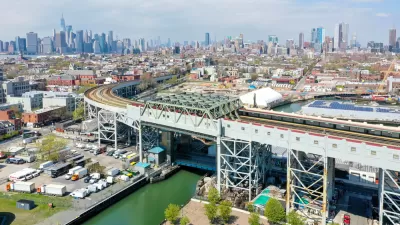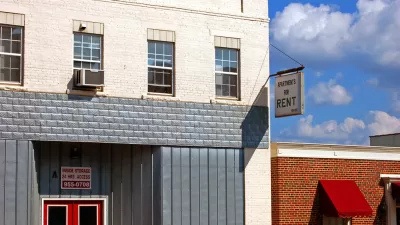A pattern of opposition to housing projects that leads to the underdevelopment of land has contributed to a housing shortage in San Francisco, writes planning consultant Jim Chappell.
What does NIMBYism defeated look like? For proponents of a 420-unit housing plan in San Francisco, it looks like a 7-0 approval from the Planning Commission and 4-0 (with only a minor modification) from the Board of Appeals.
Jim Chappell, former head of the San Francisco Planning and Urban Research Association (SPUR), writes that the effort to get the much needed project approved was a drawn out one, largely due to some residents who did not want the housing units in their neighborhood.
Chappell writes that the recent struggle to get this project approved mirrors a similar pattern with other developments in which neighbors opposing the new construction demand that the number of units be cut down. Those demands result in drawn-out squabbling and long delays at the Planning Commission level of approval, with the end result being housing projects on underdeveloped plots that don’t meet the housing demand, according to Chappell.
"Multiple this by ten or twenty times a year, and we were creating the housing shortage that is now upon us. Even with upping our game, San Francisco created some 22,000 jobs from 2010 to 2013, and only around 10,000 housing units during the same period. No wonder the average 1-bedroom in San Francisco is going for $3100 per month!"
FULL STORY: SPOILER ALERT: 420 Housing Units Under Construction

Alabama: Trump Terminates Settlements for Black Communities Harmed By Raw Sewage
Trump deemed the landmark civil rights agreement “illegal DEI and environmental justice policy.”

Planetizen Federal Action Tracker
A weekly monitor of how Trump’s orders and actions are impacting planners and planning in America.

The 120 Year Old Tiny Home Villages That Sheltered San Francisco’s Earthquake Refugees
More than a century ago, San Francisco mobilized to house thousands of residents displaced by the 1906 earthquake. Could their strategy offer a model for the present?

In Both Crashes and Crime, Public Transportation is Far Safer than Driving
Contrary to popular assumptions, public transportation has far lower crash and crime rates than automobile travel. For safer communities, improve and encourage transit travel.

Report: Zoning Reforms Should Complement Nashville’s Ambitious Transit Plan
Without reform, restrictive zoning codes will limit the impact of the city’s planned transit expansion and could exclude some of the residents who depend on transit the most.

Judge Orders Release of Frozen IRA, IIJA Funding
The decision is a victory for environmental groups who charged that freezing funds for critical infrastructure and disaster response programs caused “real and irreparable harm” to communities.
Urban Design for Planners 1: Software Tools
This six-course series explores essential urban design concepts using open source software and equips planners with the tools they need to participate fully in the urban design process.
Planning for Universal Design
Learn the tools for implementing Universal Design in planning regulations.
Clanton & Associates, Inc.
Jessamine County Fiscal Court
Institute for Housing and Urban Development Studies (IHS)
City of Grandview
Harvard GSD Executive Education
Toledo-Lucas County Plan Commissions
Salt Lake City
NYU Wagner Graduate School of Public Service




























